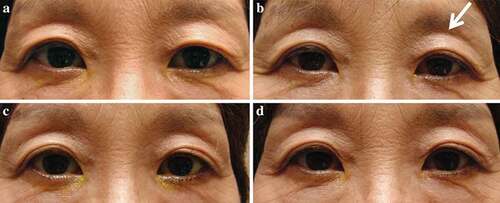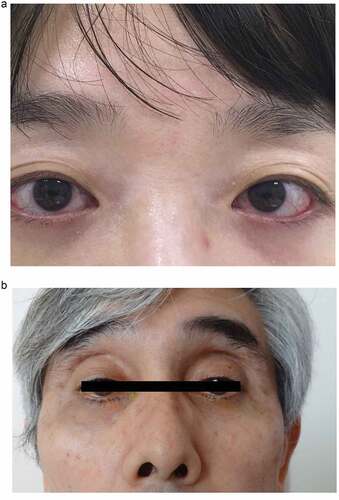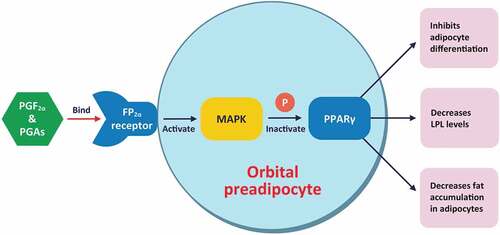Figures & data
Table 1. Clinical and cosmetic signs of prostaglandin-associated periorbitopathy syndrome (PAPS)
Figure 1. A case of DUES caused by treatment with benzalkonium chloride (BAK)-preserved tafluprost ophthalmic solution.

Figure 2. Notable signs of PAPS.

Figure 3. Mechanism of action and impact of PGAs on adipose changes in PAP.

Figure 4. Receptor-based mechanism of action.

